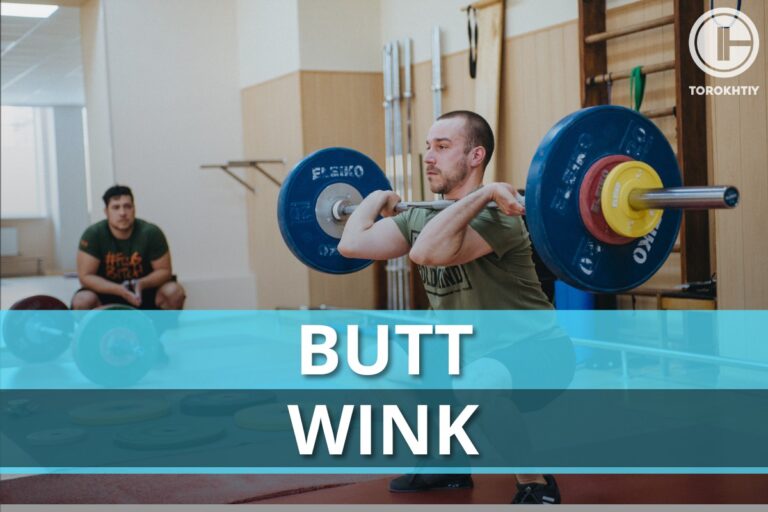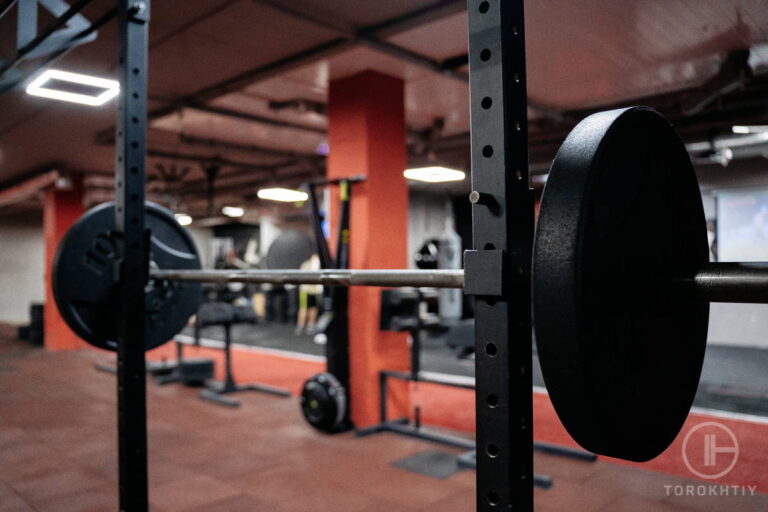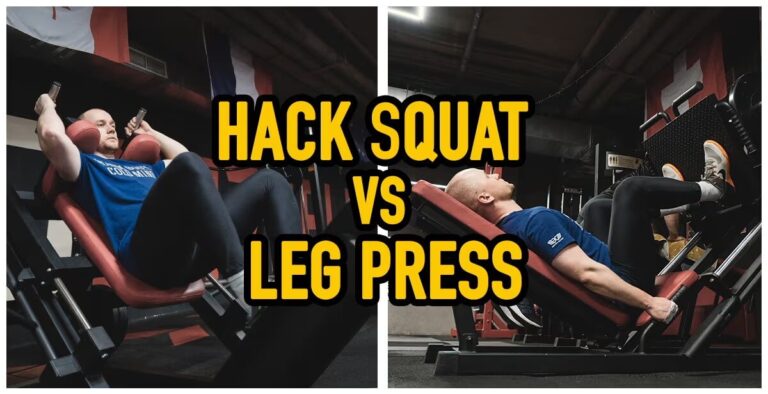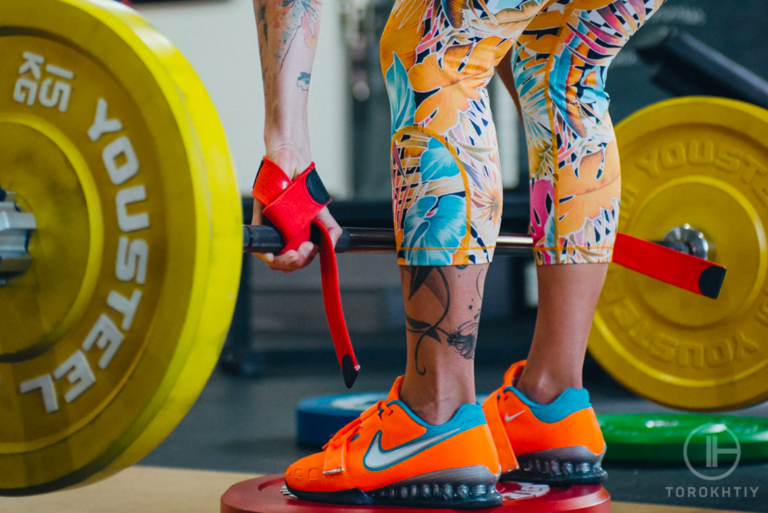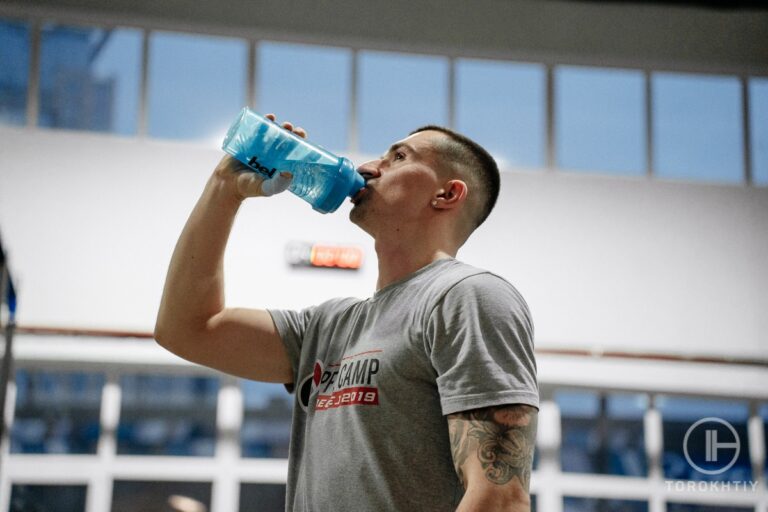Are Basketball Shoes Good for Lifting?
I’ll discuss why they may not be the best choice and compare them to professional weightlifting shoes.
Are Basketball Shoes Good for Lifting? The design of basketball shoes can offer increased comfort, stability, and ankle support when compared to other shoes. Despite this, the increased cushioning and heel elevation both decrease the amount of force generated off the ground. If you’re looking for optimal performance, stick with professional lifting shoes.
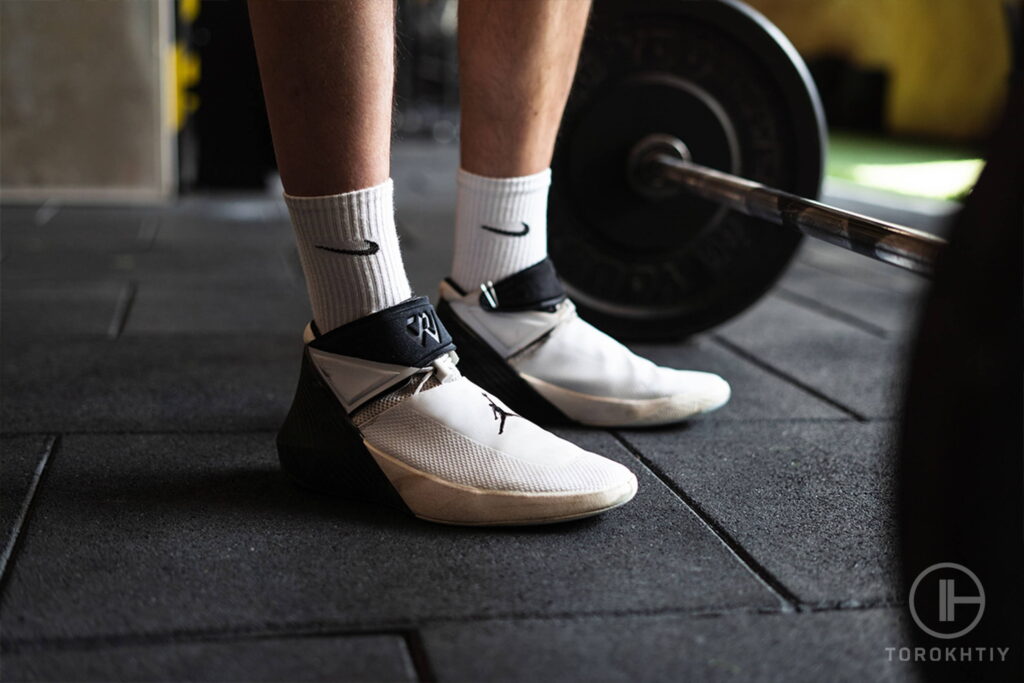
Reasons to Wear Basketball Shoes for Lifting
Look into the gym bag of any elite level lifter and you’ll find gym accessories such as a lifting belt, gym chalk, and knee sleeves. Using the right shoes for lifting is perhaps one of the biggest concerns for lifters, making the right type of shoe an important choice.
It’s not uncommon to see recreational and some higher-level lifters squatting in basketball shoes, but why is this?
Basketball shoes have been around for a long time. As their name suggests, they are designed to withstand a lot of pressure from running and jumping on the basketball court. It is these design features that may make lifting in basketball shoes an attractive option.
Reason 1: Basketball shoes have heel support
Basketball shoes offer great heel support, necessary for basketball players to keep their balance higher on the court. Not having enough heel elevation during lifting is one of the most commonly reported struggles of lifters.
Too much pressure on the heel during lifting can cause a loss of balance and a subsequent decrease in force production. Lifting shoes also elevate the heel, shifting pressure onto the center of the foot.
Reason 2: Basketball shoes have good traction
The rubber sole on a basketball shoe provides great traction, allowing players to change pace and direction quickly during a game. Without traction, players would be sliding everywhere, greatly increasing the risk of injury.
The traction provided by a basketball shoe can be comparable to a lifting shoe. Traction is important when lifting to provide a good base to work from and help lifters feel secure.
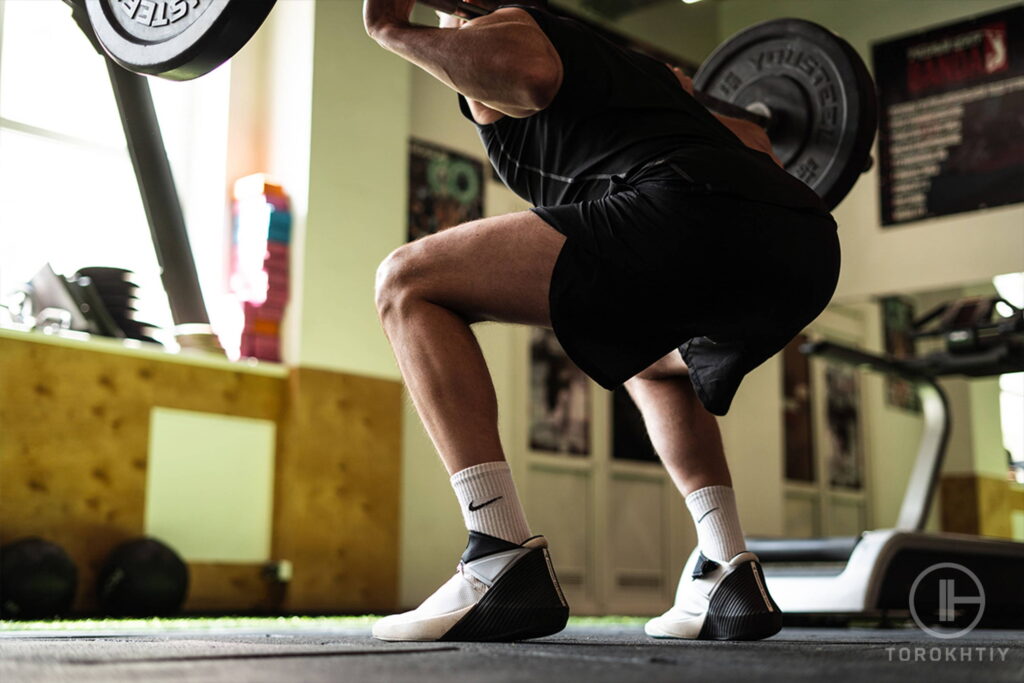
Reason 3: Basketball shoes have ankle support
Basketball shoes offer great ankle support. During a game, a player must twist and turn rapidly to try to out-manoeuvre the opposing team. Therefore, basketball shoes need to be designed to withstand a lot of pressure on the ankle joint.
The same can be said for lifting, especially when performing a deadlift or squat. In both cases, the ankle joint is the most vulnerable meaning the shoe used when lifting needs to provide good ankle support.
Reason 4: Basketball shoes are durable
With the intensity of basketball being so high, the shoes have to be able to take a good beating. The quality and construction of basketball shoes need to be good to make them durable.
This may make them a good option for lifters looking for function and longevity when choosing a lifting shoe.
Reason 5: Basketball shoes are comfortable
During a game, players need to be focused on the ball rather than the comfort of their shoes. The same can be said about lifting.
During a lift, the focus of the lifter needs to be on correct bracing and technique, not the comfort of the shoes.
Why Basketball Shoes May Not Be Best for Lifting
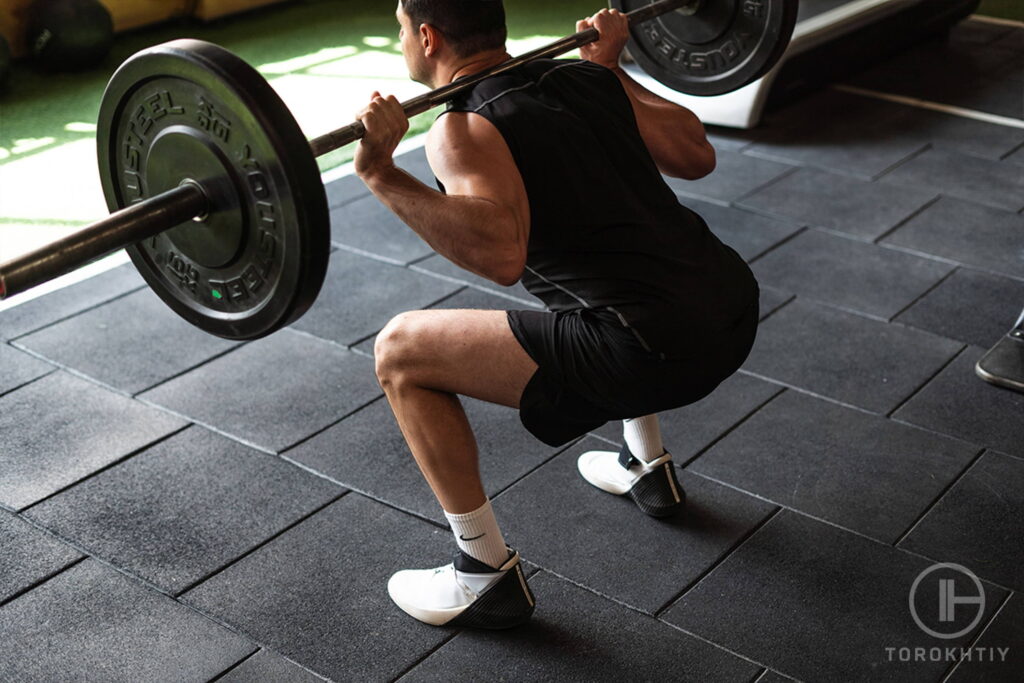
Whilst on paper the benefits I’ve listed above seem promising, it’s these same design features that mean they may not be the best option for lifting. So, can you work out in basketball shoes?
Reason 1: The cushioning in basketball shoes is too thick
Basketball shoes are designed to absorb impact from running and jumping a lot during a game. This means the shoes don’t have the same solid base weightlifting shoes do.
Whilst this may be a good thing in basketball, it isn’t for weightlifting. During a deadlift and squat, force is generated against the floor. The extra cushioning in basketball shoes will absorb some of the generated force, reducing the output. This works against the goal of weightlifting; to lift as much weight as possible.
Reason 2: Basketball shoes can limit contact with the floor
To lift heavy, you want to maintain strong contact with the floor at all times during the lift. The thicker soles in basketball shoes will stop you from making a proper connection.
If you can’t maintain strong contact with the floor, you won’t be able to maintain your power output, leading to less weight lifted.
Reason 3: The elevated heel
Whilst the elevated heel provided in basketball shoes can theoretically help some lifters who suffer from ankle flexibility, it doesn’t necessarily make them the best choice.
When deadlifting you want to be as close as possible to the ground. The closer you are the better you can transfer force to the ground.
Reason 4: The ankle support may limit the range of motion
The high-top ankle support in most basketball shoes provides support for the quick dynamic movements performed during a basketball game. Whilst this sounds good for lifting support, the high ankle cushioning can impede ankle dorsiflexion when squatting to depth.
Reason 5: The soles on basketball shoes don’t offer good stability
Whilst the soles from basketball shoes are made from similar material and offer good traction, they still tend to be softer and more flexible than flat weightlifting shoes.
Basketball shoes are designed for quick transitions on the court. This isn’t a big concern during weightlifting.
Basketball vs Powerlifting Shoes: the Key Differences
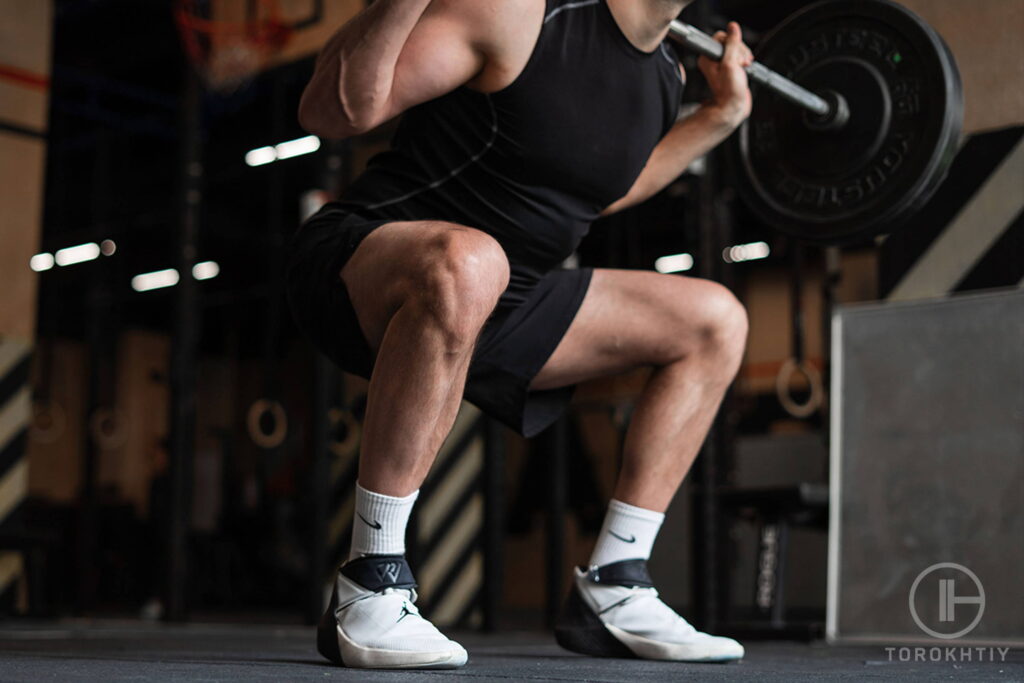
Material
Both basketball and weightlifting shoes tend to be made from a mix of leather and synthetic materials. Basketball shoes are usually made from a mix of thicker leather material and synthetic mesh with a rubber sole, making them stiff and hard to bend.
Weightlifting shoes tend to be made with thinner leather and combined with lightweight materials, making them more flexible and functional.
Heel Support
Basketball shoes tend to have a heel elevation of about 10mm which gives good support during high-impact activities. This isn’t necessary when lifting, with strong contact with the ground being key.
Weightlifting shoes still provide slightly elevated heel support, but are much smaller allowing the foot to maintain a strong contact throughout the lift.
Cushioning
Most basketball shoes have too much cushioning to make them useful for lifting. When lifting heavy, you need to drive through the floor and maintain balance.
Weightlifting shoes don’t have a lot of cushioning. This gives you a stable base to lift from and allows you to transfer force more efficiently.
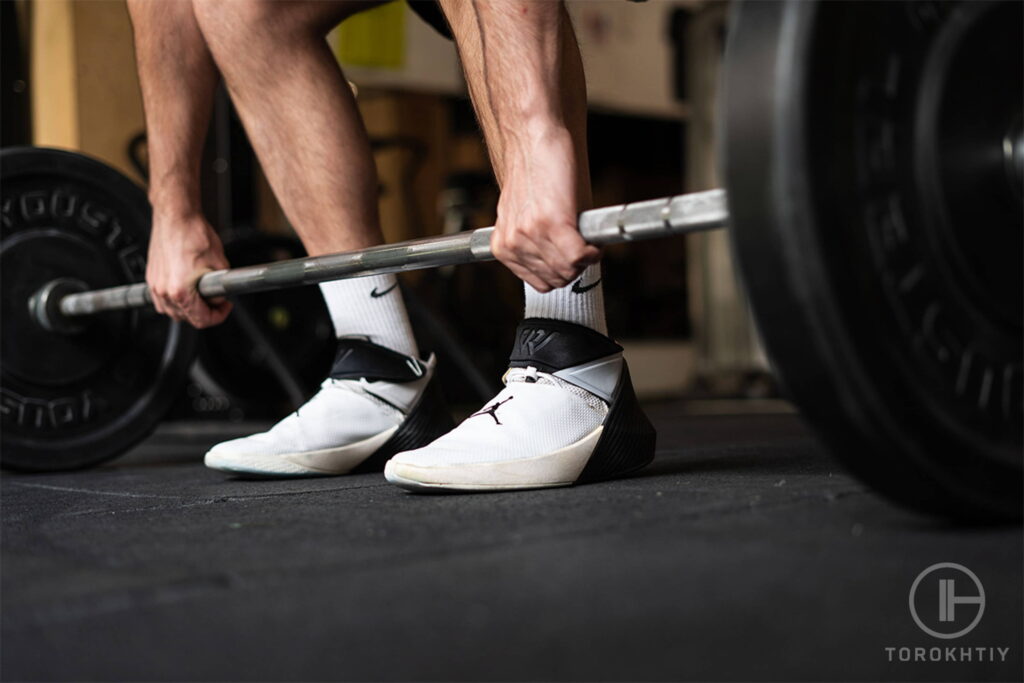
FAQs
Are Basketball Shoes Good for Deadlifting?
No, basketball shoes are not good for deadlifting. When lifting whilst standing, force is generated against the ground. That force travels from the floor, through your body, and into the bar. The compression in basketball shoes will absorb some of the force generated, reducing the output.
Are Basketball Shoes Good for Squats?
No, you shouldn’t be using basketball shoes for squatting either. Basketball shoes are designed to absorb impact from sports involving running and jumping, therefore reducing the force generation off the floor. The extra cushioning in some basketball shoes may throw you off balance.
Can you Lift in Air Jordan 1s?
You can lift in Air Jordan 1s but it won’t be optimal if you want to maximize the amount of weight you can lift. The Air Jordan 1’s do have some beneficial features. The heel-to-toe drop isn’t too big and a wider toe box may help to offer support if using them for lifting. Despite this, they still have the same major drawback of a highly cushioned sole meaning you shouldn’t go squatting in jordans anytime soon.
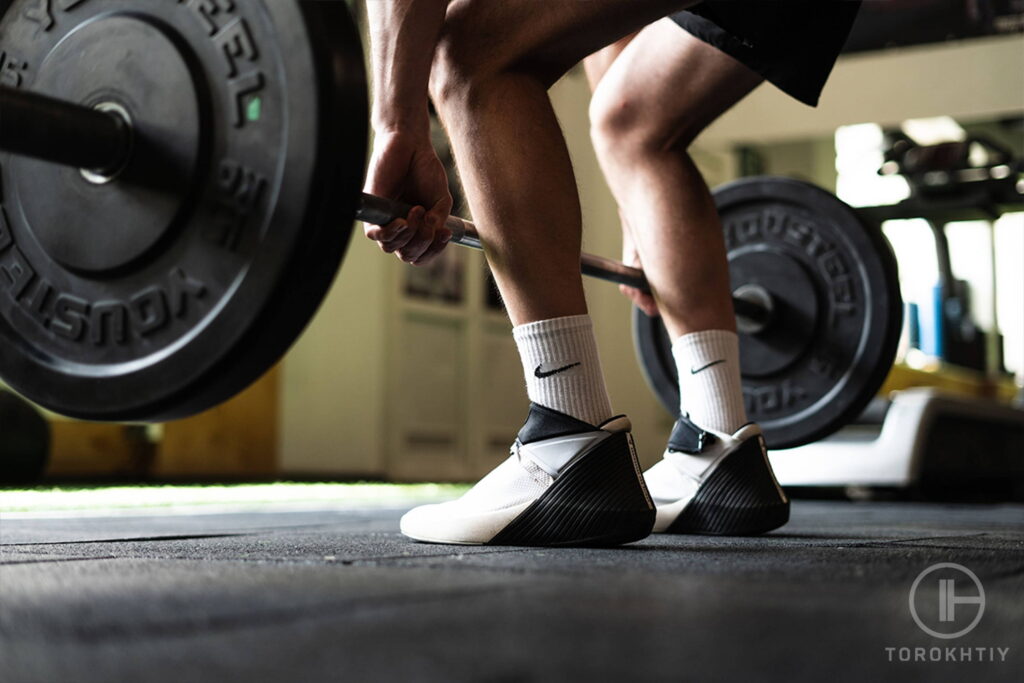
Summary
Whilst wearing basketball shoes may help you to look stylish in the gym, they won’t help you to lift more weight. Whilst the design features such as increased ankle support, sole material, and durability make them a better option than normal shoes, professional weightlifting shoes are still the best option.
What shoes do you wear in the gym and why? Have you worn basketball shoes before? Share your thoughts in the comments below.
Also read:
- Are Converse Good For Lifting
- Best Cross Training Shoes For Flat Feet
- Wide Cross Training Shoes
- Are Nike Blazers Good For Lifting
- Are Vans Good For Lifting
- Best Nike Training Shoes
- Best Shoes for Hiit Workouts
- Best Weightlifting Shoes
- Best Weightlifting Shoes for Women
References:
- Can You Wear basketball shoes outside? The Pros and Cons | Let’s Talk It Over:
https://basketballperfected.com/can-you-wear-basketball-shoes-outside-the-pros-and-cons-lets-talk-it-over/
Why Trust Us?
With over 20 years in Olympic Weightlifting, our team does its best to provide the audience with ultimate support and meet the needs and requirements of advanced athletes and professional lifters, as well as people who strive to open new opportunities and develop their physical capabilities with us.
By trusting the recommendations of our certified experts in coaching, nutrition, dietology, and sports training programming, as well as scientific consultants, and physiotherapists, we provide you with thorough, well-considered, and scientifically proven content. All the information given in the articles concerning workout programming, separate exercises, and athletic performance, in general, is based on verified data. We ensure that you can rely on our professionals’ pieces of advice and recommendations that can be treated as personalized ones which will benefit you and fully meet your needs.
The product testing process is described in more detail here
Author: Ihor Shymechko
Pro Olympic Weightlifter, Coach
Best Results: Snatch – 208 kg,
C&J – 240 kg
Ihor has been a professional weightlifter since 1996, boasting over two decades of competition experience. His notable achievements include clinching the European Championship in 2009 and securing a silver medal in the 105kg division at the Senior World Championships in 2011. Ihor represented his country in the 2008, 2012, and 2016 Summer Olympics. After retiring from competitive weightlifting, he transitioned to coaching, leveraging his vast experience to guide athletes who now compete on both national and international stages.


